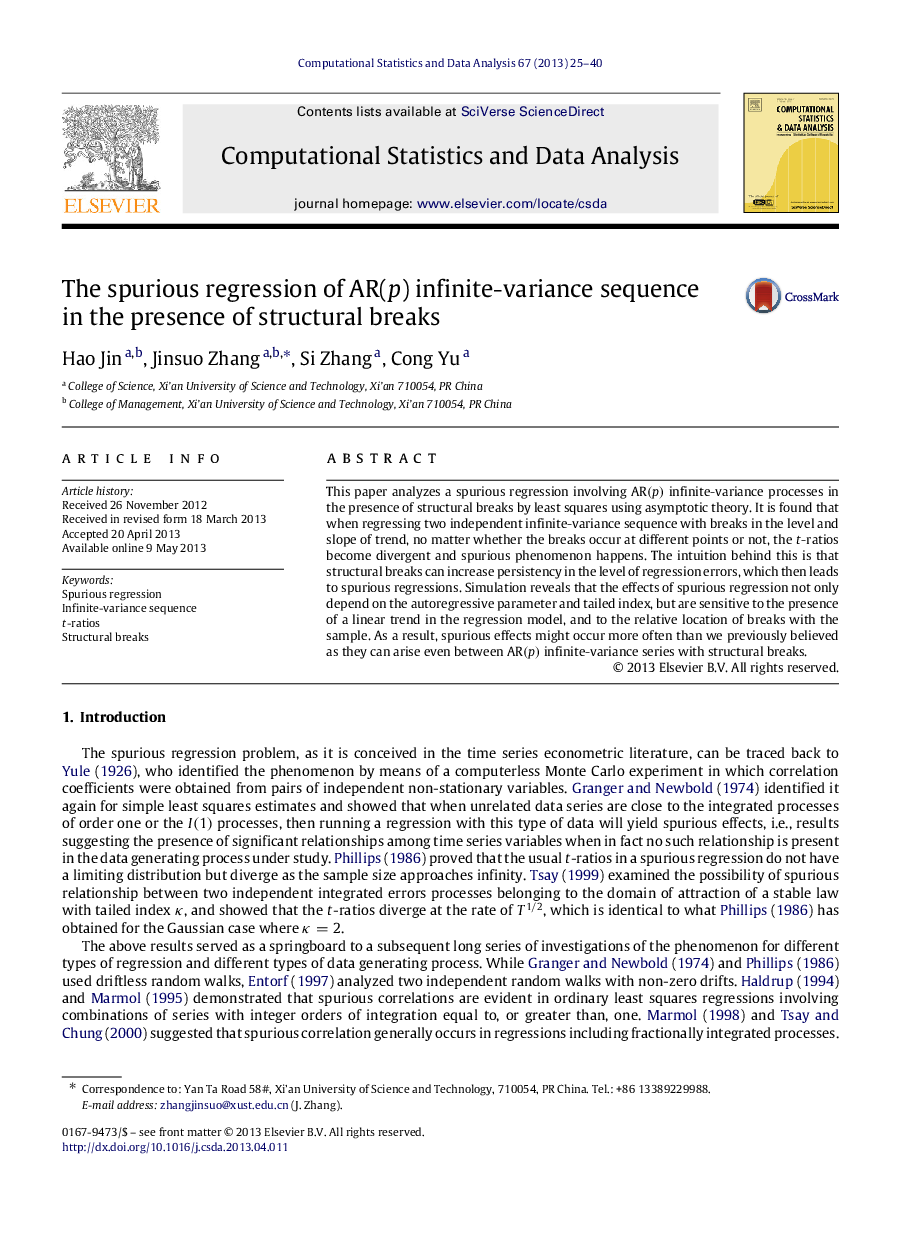| Article ID | Journal | Published Year | Pages | File Type |
|---|---|---|---|---|
| 415592 | Computational Statistics & Data Analysis | 2013 | 16 Pages |
This paper analyzes a spurious regression involving AR(p)(p) infinite-variance processes in the presence of structural breaks by least squares using asymptotic theory. It is found that when regressing two independent infinite-variance sequence with breaks in the level and slope of trend, no matter whether the breaks occur at different points or not, the tt-ratios become divergent and spurious phenomenon happens. The intuition behind this is that structural breaks can increase persistency in the level of regression errors, which then leads to spurious regressions. Simulation reveals that the effects of spurious regression not only depend on the autoregressive parameter and tailed index, but are sensitive to the presence of a linear trend in the regression model, and to the relative location of breaks with the sample. As a result, spurious effects might occur more often than we previously believed as they can arise even between AR(p)(p) infinite-variance series with structural breaks.
